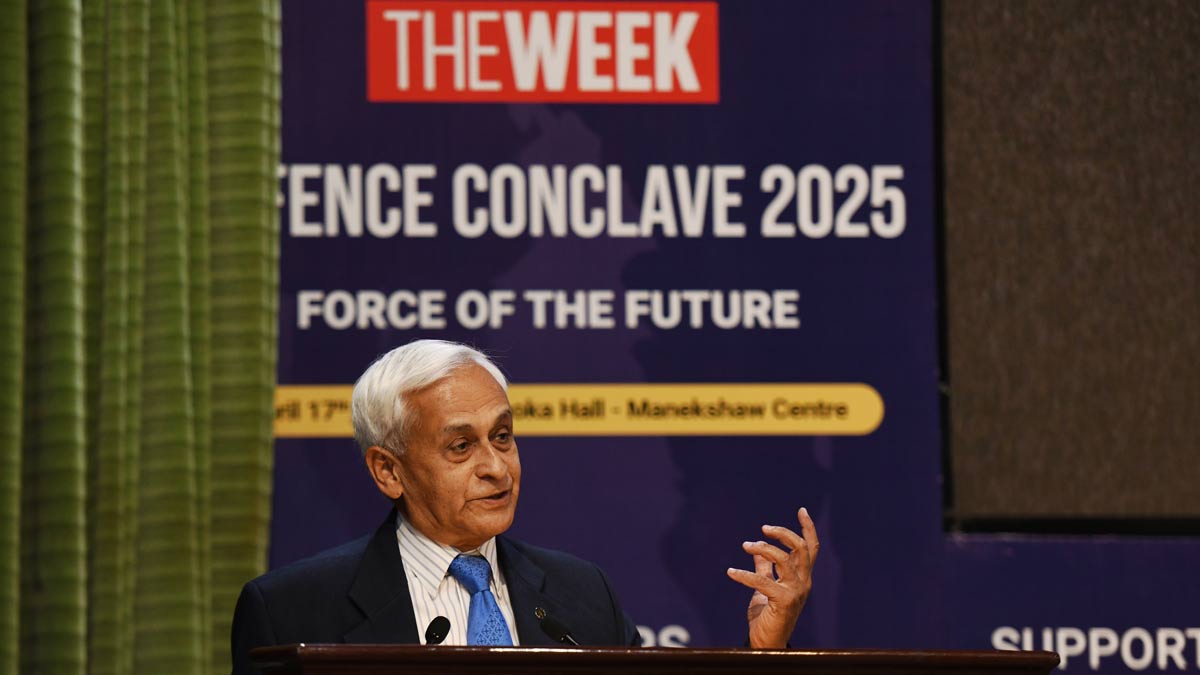‘National security strategy need of the hour’: Ex-Navy chief Admiral Sunil Lamba
 Admiral Sunil Lamba, former Navy chief, during a session at THE WEEK Defence Conclave 2025 in New Delhi | Sanjay Ahlawat
Admiral Sunil Lamba, former Navy chief, during a session at THE WEEK Defence Conclave 2025 in New Delhi | Sanjay Ahlawat
India has a long maritime history going back to over 5,000 years, said Admiral Sunil Lamba, former Navy chief, during a session at THE WEEK Defence Conclave 2025 in New Delhi. “We’re very fortunate with our geography with a coastline that stretches over 7,000km. We also have the only ocean—the Indian Ocean—named after a country. We sit in an advantageous position to dominate the sea lines of communication, provided we have a Navy worth its salt,” said Lamba. He spoke about the importance of having a blue-water Navy and of improving our ship-building capacities.
If we look back in history, any country which has become a global power has ridden on the back of maritime power, whether it is the Dutch, the French, the Brits, the Americans and now the Chinese. Indian Navy has a great advantage, with 95 per cent of trade by volume and 68 per cent by value flowing through our oceans. To be counted in the larger Indo-Pacific region, it is paramount that we have a blue-water Navy, he said.
“We came out with our first naval plan in 1948 and the national maritime document in 2004. Unfortunately, we still don’t have a national security strategy, which is the need of the hour according to him. Only then can we know the military capability required to support this strategy, and only then can we build a powerful force for the future.”
Lamba also spoke about our ship building capacity which has a long way to go, he said. The largest ship builders of the world—China, South Korea and Japan—have dominated the market, with India’s share being less than 1 per cent. Chinese ship-building capacity is only going to go up in the coming years. The productivity of Chinese shipyard is unmatched in the world, with China currently having the largest fishing fleet, merchant marine and ship-building capacity. They are commissioning more warships than the rest of the world put together.
In the 1970s, the Cochin Shipyard got the go-ahead and the technology transfer to build bulk carriers. It built four and then nothing afterwards. Today, it is surviving only on the back of the Navy. If it wasn’t for the INS Vikrant contract, it would have gone belly-up long ago. The Navy also signed a contract with all the largest private ship builders in India. Unfortunately, the private companies were badly affected by the 2008 financial crisis, and not a single ship was delivered to the Navy.
To build a force for the future, we also need timely approval of sanctions for shipbuilding, said Lamba. When it comes to indigenous content, we have improved significantly, with a majority of the ships being built in India now. But we have a long way to go, he emphasised. “The Navy has an ambitious plan to build 200 ships by 2027, but we are running way behind schedule,” he said. We invested huge capital to set up a submarine building line in Mumbai, but most of our skilled welders were poached by Australia. We had to start from scratch when we started building the Scorpene.
“People in uniforms focus on the outcome while the bureaucracy focuses on the process,” he said.
Maritime